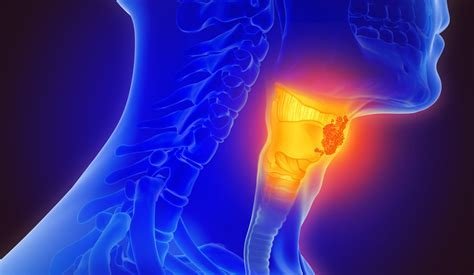Merck announced that the IAP (inhibitor of apoptosis protein) inhibitor xevinapant (formerly known as Debio 1143) plus chemoradiotherapy (CRT) markedly improved long-term efficacy outcomes in patients
14 September 2022 | Wednesday | News

Image Source : Public Domain
- First randomized trial in decades to show significant improvement in overall survival in patients with LA SCCHN, reinforcing the transformative potential of xevinapant over standard of care in the curative setting
- Patients treated with xevinapant plus CRT almost twice as likely to be alive at five years (53% vs 28%) in Phase II study
- Two ongoing Phase III clinical trials of xevinapant in this setting, TrilynX and XRay Vision, are currently recruiting, with more than 250 centers worldwide
Merck, a leading science and technology company, today announced that the IAP (inhibitor of apoptosis protein) inhibitor xevinapant (formerly known as Debio 1143) plus chemoradiotherapy (CRT) markedly improved long-term efficacy outcomes in patients with unresected locally advanced squamous cell carcinoma of the head and neck (LA SCCHN) compared with placebo plus CRT. The addition of xevinapant more than halved the risk of death over five years compared with placebo. These late-breaking data from the 96-patient Phase II trial will be presented during the mini-oral session on head and neck cancer on September 10, 2022 at 10:55 AM CEST (Abstract #LBA33) at the European Society of Medical Oncology Congress 2022.
“There is a clear need for improved treatment options for patients with unresected locally advanced head and neck cancer. Chemoradiotherapy has served as the standard of care in this setting for the past several decades, yet half of patients treated with CRT see their cancer return, whether locally or as metastatic disease,” said Prof. Jean Bourhis, M.D., Ph.D., Department Head of Radio-Oncology at the University Hospital of Lausanne and lead investigator of the study. “The five-year results from this randomized Phase II study are the first to show improved efficacy outcomes over standard of care for these patients and suggest the potential for xevinapant to increase the proportion of patients who achieve cure following definitive therapy.”
In this analysis, overall survival (OS) was evaluated at five years after the last patient was randomized; median follow-up was 60.1 months (range, 7.1-70.5 months) in the xevinapant arm and 39.2 months (range, 4.8-71.2 months) in the placebo arm. The data show:
- Xevinapant more than halved the risk of death over five years of follow-up compared with placebo (adjusted HR, 0.47 [95% CI, 0.27-0.84]; nominal p=0.0101).
- Median OS was prolonged with xevinapant (median not reached; 95% CI, 40.3 months-not evaluable) versus placebo (36.1 months; 95% CI, 21.8-46.7 months).
- Treatment with xevinapant nearly doubled OS, with a 53% (95% CI, 37-66%) probability of survival after five years compared with 28% (95% CI, 15-42%) with placebo.
As previously reported, the addition of xevinapant to CRT was well-tolerated and consistent with the safety profile of CRT alone with approximately two years of follow-up. Adverse events of grade 3 or higher were reported in 41 (85%) of 48 patients in the xevinapant group and 41 (87%) of 47 patients in the placebo group. The most common grade 3 or higher treatment-emergent adverse events among patients who received xevinapant plus CRT that occurred in more than 15% of patients were dysphagia (50%), anemia (35%), mucositis (31%), and neutropenia (23%).1 Follow-up analysis at three years showed similar safety.2
“Head and neck cancer is a devastating disease that often has a profound impact on a patient’s ability to eat, communicate and even sleep, yet there have been few treatment advances over the past 20 years,” said Amanda Hollinger, Executive Director, Head and Neck Cancer Alliance. “We are hopeful that these findings may pave the way for a new approach that can improve outcomes.”
Previously reported results from the randomized, double-blind Phase II study showed the addition of xevinapant to standard-of-care CRT provided a statistically significant improvement in locoregional control rate at 18 months, the primary endpoint, versus placebo and CRT in patients with unresected LA SCCHN (54% [95% CI, 39 to 69] versus 33% [95% CI, 20 to 48]; odds ratio 2.69 [95% CI, 1.13 to 6.42]; p=0.026). Primary results of the study were published in The Lancet Oncology.1
“The opportunity to develop an oncology medicine in a curative setting is a rare privilege, especially for a hard-to-treat disease such as locally advanced head and neck cancer, where many patients cannot undergo surgery,” said Victoria Zazulina, M.D., Head of Development Unit Oncology, Merck. “Based on these Phase II results, we are committed to exploring the potential value of xevinapant in the locally advanced setting through our ongoing Phase III program, as we pioneer the investigation of the apoptotic pathway as a novel treatment modality.”
Based on the promising efficacy and safety profile seen in the Phase II trial, and the urgent need for new treatments, xevinapant is being evaluated in two ongoing Phase III clinical trials. The first is the international, randomized, double-blind, placebo-controlled TrilynX study (NCT04459715) to evaluate the efficacy and safety of xevinapant versus placebo when added to definitive CRT in patients with unresected LA SCCHN. The second is XRay Vision (NCT05386550), a randomized, double-blind, placebo-controlled study to evaluate the efficacy and safety of xevinapant versus placebo when added to adjuvant, post-operative radiotherapy in patients with resected LA SCCHN who are at high risk for relapse and are ineligible for cisplatin. Both TrilynX and XRay Vision are currently recruiting.
In February 2020, the U.S. Food and Drug Administration granted Breakthrough Therapy Designation to xevinapant (formerly under development with Debiopharm as Debio 1143) for treatment of patients with previously untreated LA SCCHN, in combination with current standard of care, based on results of the Phase II trial.
Most Read
- Top 25 Biotech & Biopharma Leaders in Sustainable Innovation, 2025
- China’s Biopharma Dealmaking Surges in H1 2025, Driven by Record Licensing and Oncology Focus
- Chikungunya in China: How a “Forgotten” Arbovirus Found the Perfect Storm
- How Innovation Gaps in Biopharma Raise New Safety Concerns
- Smart Implants and the Future of Musculoskeletal Injury Treatment
- How Ethical Gaps in Psychiatry Could Undermine Biopharma Progress
- The Evolving Landscape of Women’s Health Innovation in the Asia-Pacific
- Using NLP-Driven Decision Support in Emergency Health Assistance
- Taiwan Steps Into the Global Spotlight With a New Cancer Therapy
- The Role of Unique Device Identification (UDI) in Tracing Medical Device Safety
- The Importance of a Patient’s Mental Health During Clinical Trials
Bio Jobs
- The State of Biotech and Life Science Jobs in Asia Pacific – 2025
- Avantor’s New CEO Ligner Aims to Unlock Global Potential and Deliver Shareholder Value
- AstraZeneca Commits $50 Billion to U.S. Expansion by 2030 in Biggest-Ever Global Investment
- Thermo Fisher, SAMRC, and South Africa’s Department of Science and Innovation Launch CATIR to Nurture Next-Gen Scientists
- Cube Biotech Appoints Former Sartorius CEO Dr. Joachim Kreuzburg to Board of Directors
- FDA’s AI Transition Marks a Turning Point in Drug Review: Industry Faces Pressure to Adapt Amid 20% Workforce Cut
- WuXi XDC Completes Mechanical Build of Singapore Bioconjugate Manufacturing Hub
News
Editor Picks











